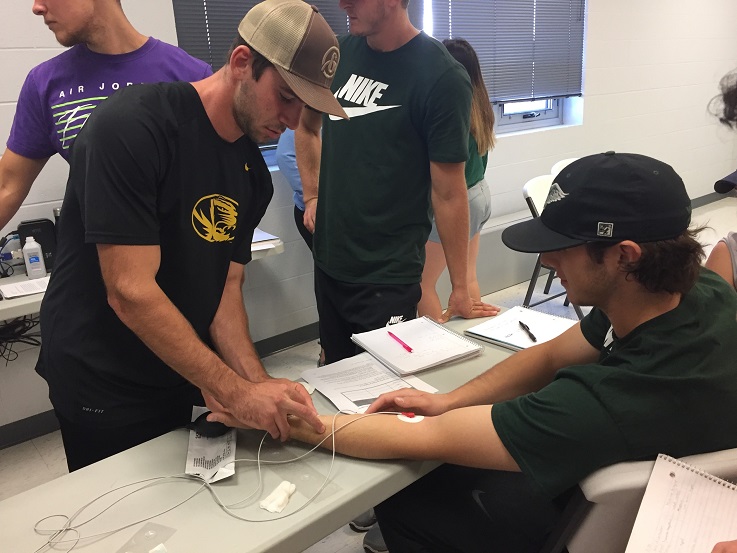How Wearable tech is changing the field of Exercise Science

As a candidate for a bachelor’s degree in exercise science, you might ask: how do I keep pace with clients and patients who already track so much of their personal health data? As wearable tech makes everyone smarter, exercise science students and professionals will become more timely and targeted with their instruction and interventions.
Business Insider points out that while performance records had already begun to hit new heights, the Golden Age of genetic and biometric data has barely begun. “As we develop better types of technology, including virtual and augmented reality, athletes will continue to improve their abilities and become capable of feats that were unimaginable decades ago,” writes Business Insider.
Wearable fitness trackers have become fully mainstream, with over 15% of US consumers owning a Fitbit, smart watch, or other wearable device as of December 2016 according to one report. According to Allied Market Research, the global fitness tracker market was $17 million in 2016, and is projected to grow to $62 million by 2023. This is not without good reason; the hardware and software which powers wearable devices is improving rapidly, as Live Science explains. People today have access to more personal health data than ever before, and as such data-driven exercise science is blooming.
Tech that provides real-time information on an athlete’s movement will allow coaches and trainers to give highly specific feedback on areas of strength and areas that need improvement. Performance tracking used to be based on film footage of athletes or required expensive biometric monitoring setups. However, the advent of wearables has democratized biometric feedback. Anyone with a wearable tracker can learn movement, heart rate, and breathing rates allowing trainers to design more personalized workouts for clients.
The Guardian cites a London gym combining utilizing RFID bands in spin classes to track the cyclists’ progress. This experience gives gym goers access to more feedback from their bodies as they exercise, informing the decision of when to push harder and when to take a rest. Gyms which incorporate wearable trackers into workouts and classes have a chance to cater their classes to a growing group of exercisers who crave personal data and provide a more rewarding and effective workout experience.
Fitness trackers also have the potential to shed light on ways to live healthier while you’re not at the gym or on the field. Live Science explains that there is an unrealized potential for the study of daily living through wearable activity trackers. Most people know intuitively that moving periodically is better for your health than sitting still all day. Advances in accelerometer technology (the hardware at the core of any activity tracker) will open the door for exercise researchers to pinpoint optimum balances of light activity and rest. The usual recommendation of “get up and move once an hour” is based more on conjecture than fact; it will take exercise scientists putting trackers into practice in the years to come to determine the best rate of light activity.
Beyond the personal tracker, another wearable device up-and-coming in the fitness world is the virtual reality headset. Business insider cites VR and AR (augmented reality) wearables as a key driver towards the future of professional sports. VR devices would allow athletes to relive moments they would have liked to play differently, or project hypothetical practice scenarios. AR devices, such as a small projector in a football player’s helmet, can give players extra information mid-game, giving a competitive edge with more information. In both scenarios, athletes will have most success in this VR paradigm under tech-savvy coaches who can maximize the benefits of VR and AR training. VR opens up new ways to train for us non-pros too: The Guardian speculates about combining a stationary bike workout with a VR headset to simulate riding through exotic settings. The hypothesis here is that riding somewhere with a view where you can see and feel your progress is more motivating and will lead to better performance – it will take exercise science to put these hypothetical methods into practice and track whether they fulfill the promise of better results.
From a wristband that tracks your steps at work to your local gym’s data-driven spin class to VR helmets on Super Bowl Sunday, wearable tech is becoming an important tool in all areas of sports and fitness. Exercise Science degree programs at William Woods University prepare undergraduates for success across these fields and instills a deep understanding of the human body at motion. With these tools, William Woods sports science alumni can make the most of this new technological trend and lead the charge towards a healthier future.

